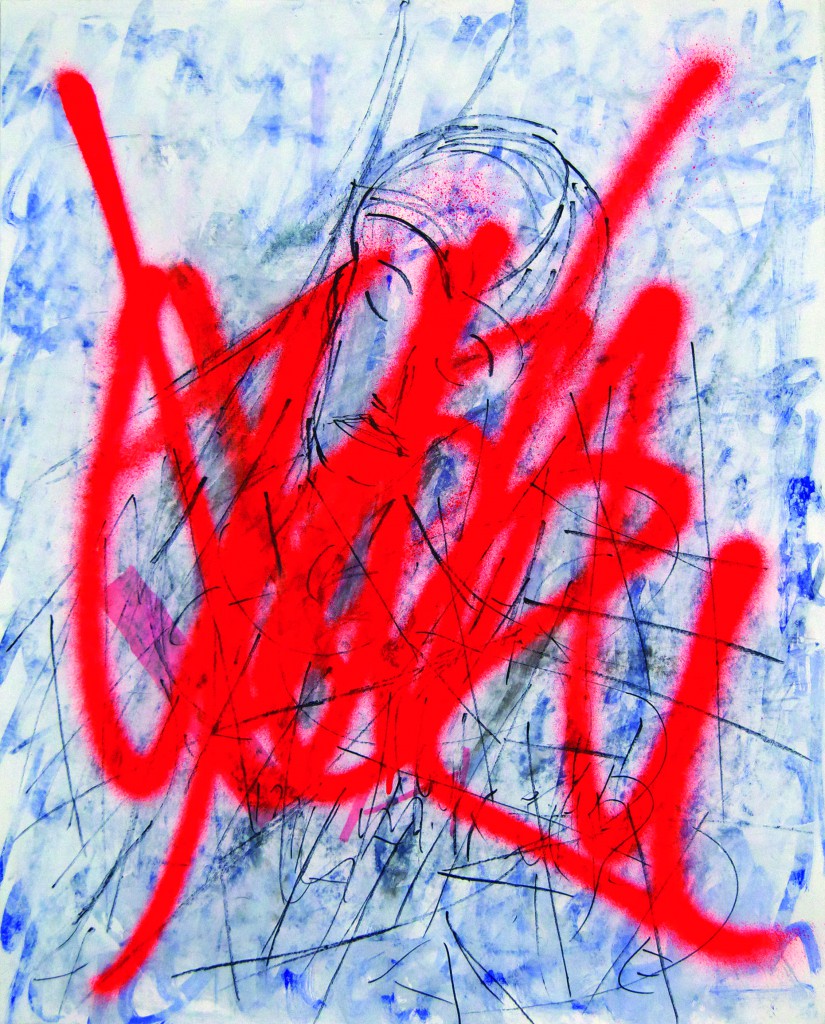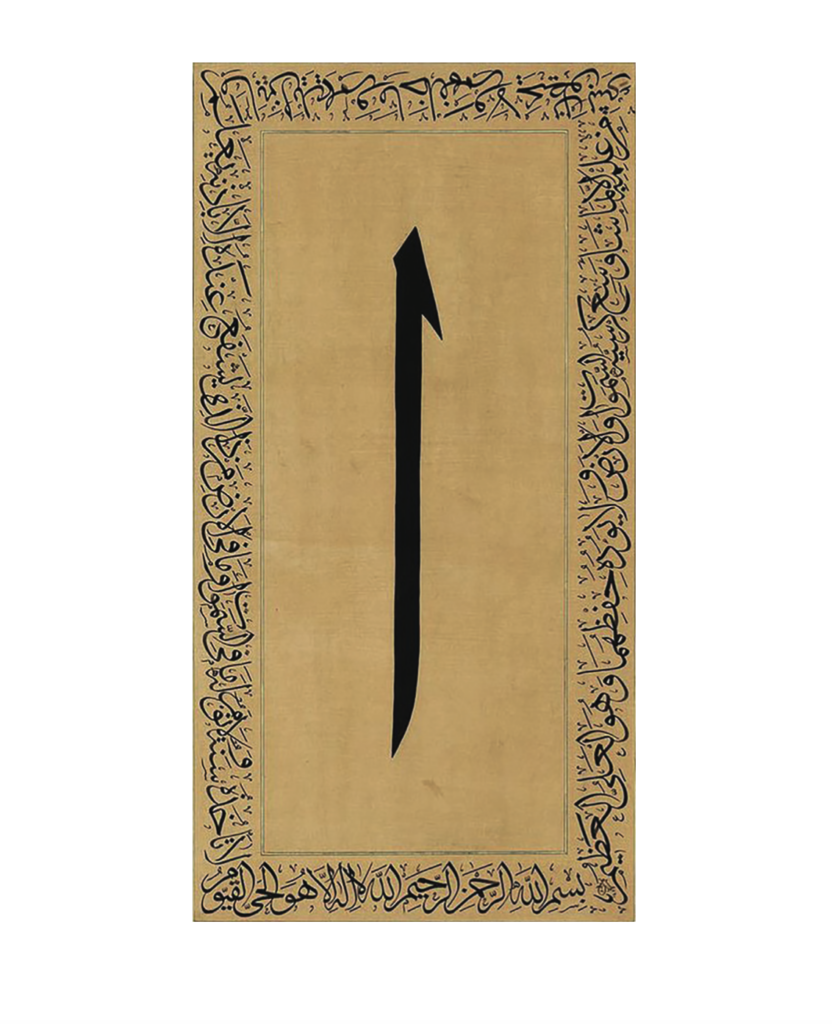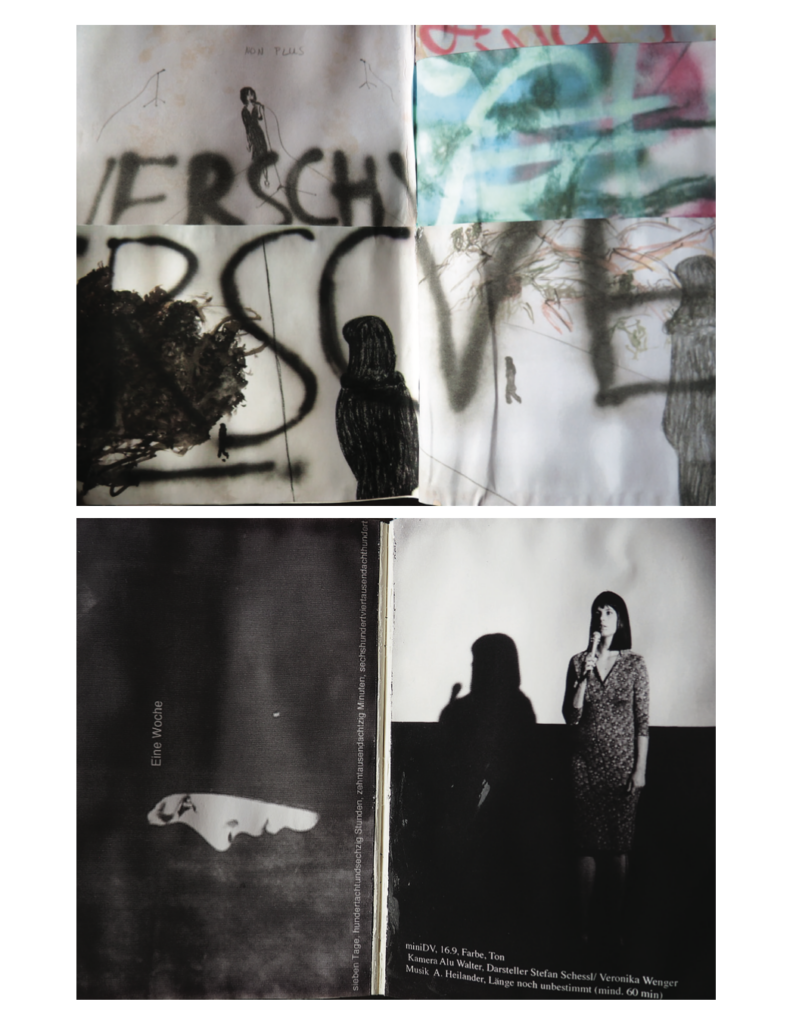
Veronika Wenger 2014
60 cm x 50 cm, spray and watercolor on paper
You cannot approach the work of Veronika Wenger with your bulky clothes. You cannot walk on her lines in high heels. How do I know it? Because I fell down.
First, I was so confident: It has to be the “surface problem” of the “formalist artist.”
As she used the wall directly; the lines, the tapes, the phosphorus colors, the stains, she had to point out the surface. She was constructing her space on the surface. There was nothing to be afraid of. I was in my comfortable analytic position, until I decided to go after her, Hedda and the multidimensional movement of her work.
At first sight, the work of Veronika Wenger has an elegant equilibrium, a well moderate climate, an open clear sky. Her work doesn’t insist, doesn’t impose itself. But in her serene silence there is hospitality for every first step. You’ll go to her and let yourself in. If you trust her, suddenly you will find yourself in an unimaginable action. This calm work encourages you to move through the lines, bare hands and bare feet. When you jump in the work of Veronika, the action will become a total-free body experience, through the uneven bars, high, horizontal bars, still rings, climbing ropes, pommel horse; tension and extension, ruptures, grips, swinging, flipping. Here you are: upside down. Don’t be afraid. I can’t say that she is prudent for herself, but she definitely is, for the others. When you stumble, hesitate or have doubts she will see it. She takes you by the hand and invites you to continue to play. This is just the beginning. When your body is warm and stretches enough, the bars, the ropes, the rings will turn into your agile dance partners. The pommel horse gallops. You are in a dance training that prepares you for the third step.
Of course they are not paintings. They are the drawings of an imaginary four-dimensional space, seen from a bird’s eye. When you are in, during your artistic gymnastic or your dance improvisation, you should create your own space „from the perspective of the eternal.“ ( Spinoza‘s „eternal“ perspective is reflected in his Ethics (Part V, Prop. XXIII, Scholium), 1677. ) This is the freedom and the plurality of the action which generates new subjectivities.
Veronika’s fashion design background, her movies and her collage books give me the courage to go on this idea: She is a scenographer in the precise meaning of the word. In Greek, skēnographia is not the painting of scenery but is the drawing or the writing of it. That’s why maybe, sometimes her lines look like they are coming from the act of writing or sewing. However, between text, texture and textiles, her work is deeply semiological, by the way of passing through the language, separating the signifier and the signified and opening a beautiful, tin and silent space for the unexpected “unwritten poetic text.” Mallarmé would call it a dance:“the unwritten body writing.”
I thought about all this when I saw the Hedda Gabler sketches on her book. The silhouette of the inconvenient heroine, whom the play of Henrik Ibsen was named after, faces to a microphone stand, a repetitive dark line, a refrain crossing all her work for all these years of artistic creation. Hedda is not only a body standing in between the voice, the silence and the language. She gives a body to this void. What language and the body have in common is the voice, but the voice is part neither of language nor of the body. ( Mladen Dolar, A Voice and Nothing More, p. 73, The MIT Press, 2006. )
Hedda is a void space, an empty dress to become cram-full of all the pluralities. She is a trace on the wall that; you cannot read. She is a corporal distance between sound, voice and silence, past and future. Now, we are in the third stage. We are in an uncanny, yet fascinating space where our dance partner has already been gone. We become one with the emptiness defined by Hedda’s newer heard song. Hedda is the Elif (aleef) of Veronika’s alphabet.

anonymous Artist
Elif is the first letter, the first line of the Arabic alphabet; one straight line and the “1” of the Arabic numbers. In the tradition of Sufism, Elif is the symbol of “oneness” that expresses the unique- ness of Allah. According to this Elif is the source and the reason of all letters, the ere of all letters. It is the point of view mirrors the others. Thats why knowing Elif is knowing everything. As Mevlana Jalaluddin Rumi says:
“Elif is like love, hidden in the name but it’s not legible. Without Elif the basamala (in the name of the God) don’t arrive to the voice. Elif is inside everything, but you can’t see her anywhere.” ( Jalaluddin Rumi, Sun Of Tabriz: A Lyrical Introduction to Higher, Johnston & Ne- ville, 1964. )
Veronika Wenger takes the action and draws a straight line. This is the action in Hannah Arendt’s sense of the word. It generates plurality, irreversibility, unpredictability, uncontrollability and also the fragility. For this reason, action is dangerous properly like Hedda herself(s). However the action is the unique way to create something new. Thus, action is directly linked to freedom. Freedom, in the Arendtian sense, does not refer to freedom of choice or will; but to the contingency, the inherent spontaneity and the unpredictability of action. Action, in this theatral or performative sense, has also an individuating aspect. Action is the lifelong process of individuation. There is nothing, no essential identity behind the masks. So, there is no backstage for Hedda. Here is no Hedda. In her eternal performative appearance she is everywhere and she in nowhere.

Sketch book
After all, I found the courage to say that art is not all about freedom but it is the realization of the freedom. And the artwork makes you devoid of yourself, reveals from you new potential subjectivities, and puts you in a dynamic intersubjective world, as on the stage. There you are in the bodily drawn scenery by Veronika Wenger, without bulk clothes nor high heels; but “alive inside.”
Published in the catalog:
VERONIKA WENGER | DIE LINIE / THE LINE